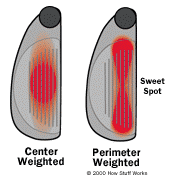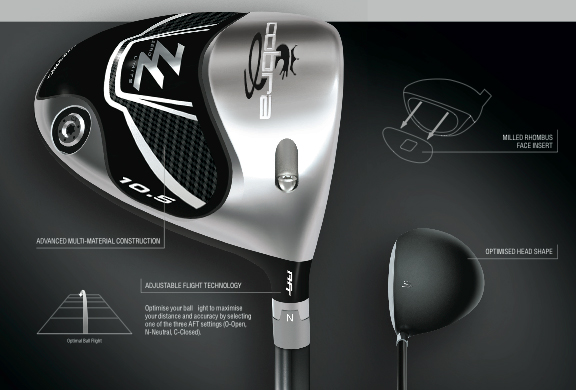| The
Physics of Golf |
| Products and Research |
Golfers are allowed to carry 14 clubs in their bag during any given round. The different club types are the driver, woods, irons, hybrids, wedges, and the putter. The most common distribution of the 14 club limit is:
-
1 driver
- 2 woods
- 6 irons
- 1 hybrid
- 3 wedges
- 1 putter
All of these clubs are very expensive due to all of the
research and testing that goes into their design.
Club shafts are generally made out of graphite. The
stiffness of shafts can vary a lot. Generally a
golfer with a faster swing speed needs a stiffer
shaft. Club faces are made out of light metals such
as titanium, steel, and steel alloys. A huge
advancement in golf club technology is the ability to
adjust your club face. Top of the line drivers now
come with a tool to adjust your driver head to compensate
for spin that may be causing a slice or a hook.
"Modern technology in golf has allowed for straighter and
longer ball flight, and enables it to happen at a higher
frequency. The obvious result is higher consistency,
which enables lower scoring. Most golf courses and
the USGA have made courses longer and narrower, deepened
bunkers, grown thicker rough, and cut greens and
surrounding areas shorter in order to hinder low scoring
as much as possible due to newer technology."(Jorgenson)
The sweet spot on a club is the spot where the ball will
generally leave the club with little to none unwanted
spin. A heavier club face will cause more resistance
to the shaft bending which causes unwanted spin on your
ball. The only problem with this is that a lighter
club is optimal for a faster club speed. Product
researchers put their time into finding a happy medium
between the two while experimenting with different metals.
 |
 |